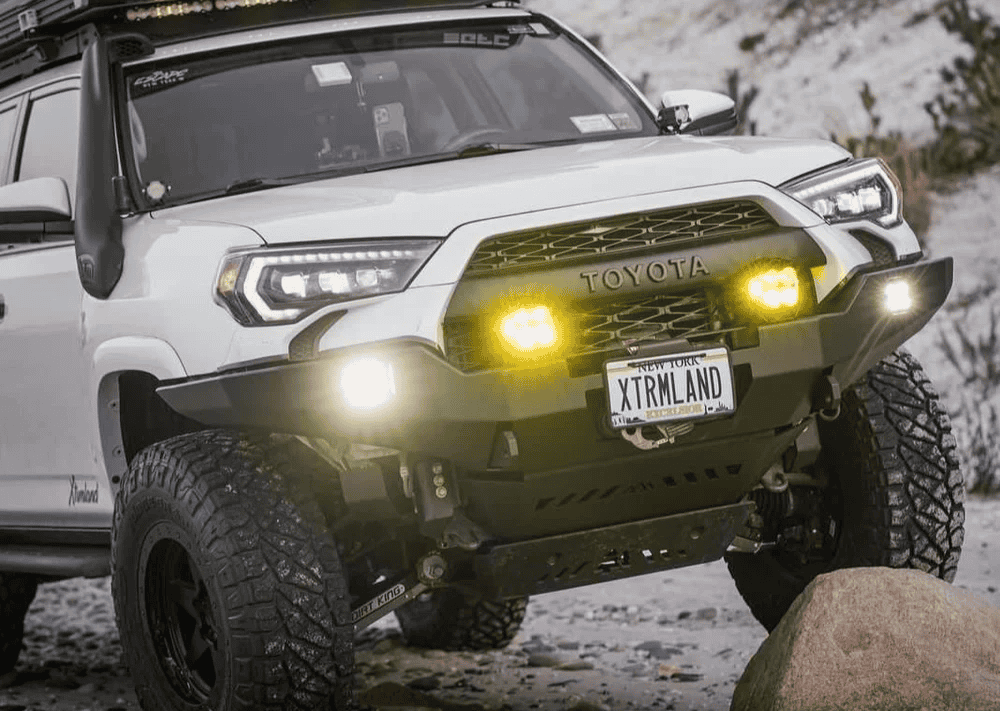Overland Vehicles

A modular overland setup is a system built to change roles without drama. The same vehicle can haul bikes one weekend, carry a family camp the next, and support a work trip after that. The core idea is simple: standard anchor points, repeatable module sizes, and quick release hardware that keeps swaps fast and safe. Done right, modules go in and out like tools in a toolbox. You keep what you need, remove what you do not, and the rig stays tidy.
Modularity starts with a plan for zones. Think driver side and passenger side walls, floor, ceiling, and doors. Each zone gets rails, tracks, or plates so you can mount storage, water, or power gear in many ways. Stick to common footprints so drawers, cabinets, and crates stack cleanly. The goal is fewer one off parts and more building blocks that play together.
Start with a blank floor that is strong and square. Add tie down points on a grid so boxes and cabinets sit secure. L track and similar rails shine here because they anchor both heavy and light items. Use quick release latches for cabinets and drawers. For soft goods, MOLLE panels and netting are light, strong, and flexible.
Choose a bed system that moves. Sliding or folding platforms free up cargo height for tall loads. If bikes or moto travel with you, map clear paths so handlebars and tires fit without wrestling gear. Keep recovery kit, first aid, and tools near doors. Heavy items live low and forward to keep handling safe. Avoid stacking weight high on one side which can create sway on rough tracks.
A smart modular overland setup works across vans, trucks, and trailers. The mounting language can stay the same even if the vehicle changes. Standard rails and plates let modules hop from one platform to another with minimal tweaks. That flexibility protects your investment over time.
Every quick change part still needs proper load paths. Use backing plates, rivnuts rated for load, and quality hardware. Cables should have strain relief and clear labeling so nothing gets pinched in a reconfig. Test each layout on a short shakedown drive before a long route.
Winter trips need insulation panels, boot trays, and dry heat management. Summer travel favors screen solutions, airflow paths, and shade setups. Build modules that swap with the seasons in under an hour so you actually make the change when the forecast shifts.
Power needs grow as you add devices. A modular electrical system uses a central battery bank with distribution blocks and labeled quick connects. Start modest with a single battery and portable solar, then add more capacity, a DC to DC charger, or shore power as your trips extend. Keep service access clear so fuses and breakers are reachable in seconds.
Water benefits from stackable containers and quick disconnect lines. A compact pump and filter can live on a small plate that mounts near the containers. When you leave on a cargo focused trip, the whole water module can stay home. Food storage follows the same logic. A powered cooler on a slide is a great starting point that works in many layouts.
Design in expansion space for a second battery, extra solar input, and an inverter later. Use common connectors and proper cable management so upgrades are clean, not a tangle. Ventilate battery and charger zones and protect cables with grommets anywhere they pass through metal.
Keep wet areas isolated from electronics. Secondary spill trays under containers save floors and wiring in rough country. Dry goods ride in sealed bins sized to your cabinet openings so you can swap menus without repacking chaos.
Weigh the rig empty and track changes as you add modules. Keep the center of gravity low and toward the middle. Confirm axle weights stay within ratings. Balanced rigs drive better, stop shorter, and stress parts less when the trail gets choppy.
If you want a systems level approach, work with a shop that builds modular hardware every day. Experienced builders audit your goals, map zones, and choose anchors that survive real trail load. Clean wiring, strong mounting, and service access are the difference between a weekend toy and a trusted travel partner. You will feel that in the first mile.
OZK Customs designs and installs modular systems that favor simple swaps and long term serviceability. The team builds around your use cases and the platform you own, from trail first truck builds to long range van travel. Explore proven approaches for capable overland rigs, see the menu of options in a custom overland upfit, and learn what sets the process apart at why choose OZK.
You bring the route and the must haves. We will map a modular overland setup that adapts to bikes, family trips, and remote work without tearing the rig apart each time. Tell us how you travel and we will turn that into a clear plan with timelines and budget ranges. Submit the form and let us help you build a rig that changes with your life.
At the shop you will also find support for suspension, racks, lighting, and integrated power that complement a modular interior. Start here for capable overland rigs and build confidence from day one.
Tell us how you travel and we will map a modular plan that fits your timeline, budget, and terrain. Submit the form to schedule a consult and get a focused path from concept to keys.
ADDRESS:
6159 E Huntsville Rd, Fayetteville, AR 72701
PHONE:
(479) 326-9200
EMAIL:
info@ozkvans.com